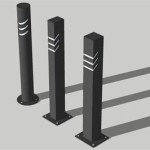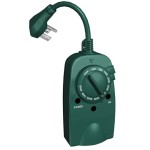Outdoor Lighting Photography Tutorial
Outdoor lighting photography presents a unique set of challenges and opportunities for photographers. The ever-changing nature of sunlight, the presence of shadows, and the variety of available light sources demand a nuanced approach to capturing stunning images. This tutorial will guide you through the essentials of outdoor lighting photography, covering key aspects like understanding natural light, utilizing artificial light, and overcoming common challenges.
Harnessing Natural Light
Natural light is the foundation of outdoor photography. It offers a rich spectrum of colors and textures that can enhance the beauty of your subject. However, understanding its nuances is crucial for achieving desired results.
Golden Hour: Often considered the most magical time for outdoor photography, the golden hour, approximately one hour after sunrise and one hour before sunset, casts a warm, diffused light that creates long, flattering shadows. This soft light enhances colors and adds a romantic feel to your images.
Blue Hour: Occurring shortly after sunset and before sunrise, the blue hour offers a cool, ethereal light that creates a serene and dramatic atmosphere. This time is ideal for capturing landscapes, cityscapes, and portraits with a moody feel.
Overcast Conditions: Overcast skies provide soft, diffused light that is perfect for portraits and landscapes. It eliminates harsh shadows and creates a balanced exposure, allowing you to capture details and colors without the need for strong contrast.
Backlighting: When shooting with the sun behind your subject, you can create dramatic silhouettes and highlight the subject's outline against the light. Experiment with different angles and light sources to achieve unique effects.
Mastering Artificial Light
Artificial light is a valuable tool for outdoor photography, allowing you to control the lighting conditions and create specific effects.
Flash Photography: Flash units can be used to add light or to freeze motion in outdoor settings. When using flash, be mindful of the direction and intensity of the light, and consider using a diffuser to soften the impact of the flash.
Continuous Light: Continuous light sources, such as LED lights, offer a more predictable and controllable light source. These lights can be used to illuminate your subject directly or to create a soft, diffused light effect.
Light Modifiers: By using light modifiers like diffusers, reflectors, and softboxes, you can control the direction, intensity, and quality of light, creating a range of artistic effects.
Overcoming Common Lighting Challenges
Outdoor lighting photography often presents challenges, but understanding these challenges and implementing effective strategies can lead to exceptional results.
Dealing with Harsh Shadows: Harsh shadows can detract from the beauty of your images. Use reflectors to bounce light back onto your subject, softening the shadows and creating a balanced exposure.
Balancing Light Sources: When shooting outdoors, you may need to balance different light sources, such as natural light and artificial light. Use your camera's exposure settings to adjust the brightness levels and ensure that all elements of your image are well-exposed.
Creating Depth and Dimension: Use backlighting and sidelighting to create depth and dimension in your images. Position your subject in a way that allows the light to highlight its form and texture.

A Quick Simple And Basic One Light Outdoor Photography Tutorial

Applying The 3 Light Studio Setup To Outdoor Portraits

The Best Lighting For Outdoor Photography Focus

Natural Light Photography Tutorial For Beginners With Diagrams

11 Outdoor Portrait Photography Tips For Easy Shots

How To Mix Ambient Light And Fill Flash For Outdoor Portraits

Tips On How To Find Good Natural Lighting Vs Bad Light In Outdoor Portrait Photography For Beginners

11 Outdoor Portrait Photography Tips For Easy Shots

Applying The 3 Light Studio Setup To Outdoor Portraits

Lighting Tutorial Creating Dramatic Outdoor Portraits With One Light







